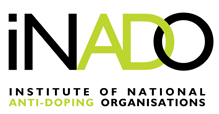Blood manipulation : current challenges from an anti-doping perspective / Jakob Mørkeberg. - (Sports Medicine in Hematology (2013) 1 (6 December); p. 627-631)
- PMID: 24319242
- DOI: 10.1182/asheducation-2013.1.627
Abstract
The delivery of oxygen is the limiting factor during whole-body endurance exercise in well-trained individuals, so manipulating the amount of hemoglobin in the blood results in changes in endurance exercise capacity. Athletes began using novel erythropoiesis-stimulating agents well before they were approved for medical use. Older manipulation practices, such as autologous blood transfusions or the administration of first-generation recombinant human erythropoietins, are still widely abused due to challenges in their detection. More recent performance enhancement maneuvers include efforts to mask doping and to induce increased endogenous erythropoietin expression. Confessions by athletes have revealed an ongoing yet extremely sophisticated modus operandi when manipulating the blood. In this review, weaknesses in detection methods and sample collection procedures are scrutinized and strategies developed to circumvent the test system discussed.
